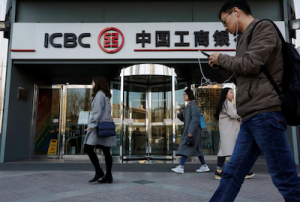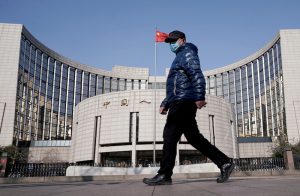(ATF) India’s banking system has been an outlier in the region achieving significant improvements at a time when its peers have struggled, but this outperformance will be shortlived as the full impact of the pandemic is felt.
Indian banks have posted significant financial improvements in their working for the first three quarters of the financial year, which ends in March 2021 – the aggregate non-performing loan (NPL) ratio fell to 7.2% by end-December 2020 from 8.5% in March 2020.
This created a stir amongst financial analysts who say that the focus has now shifted from impaired loans to growth as Asia’s third biggest economy is seen expanding at a mouth-watering 11% pace.
But there are hurdles ahead.
Read more: India orders disclosure on all cryptocurrency dealings
“India’s banks have seemingly bucked the trend among Asian emerging market banking systems regarding MPLS and credit costs but the system started from a position of relative weakness,” said Jonathan Cornish, Head of Bank Ratings, Asia-Pacific, at Fitch in an interview with Asia Times Financial Television.
“We believe the improved financial results have benefited from forbearance and haven’t yet fully reflected the impact of the pandemic. After all, notwithstanding the likely sharp economic rebound.”
In fact last month, rival rating agency Moody’s said Indian government’s support measures for bank borrowers have softened growth in nonperforming loans (NPLs), averting the risk of a sharp deterioration in asset quality.
Moody said ample domestic liquidity, loose monetary policy, moratoriums on loan repayments and government-guaranteed loans to small businesses have supported Indian banks’ asset quality. As a result, restructured loans have not increased as much as expected at the onset of the pandemic.
But Fitch said the operating environment remained challenging, particularly for state banks which must balance that recovery against the need to preserve what are generally modest loss absorption buffers.
“We expect both impaired loans and credit costs to rise as various relief measures ease timing wise, we see them crystallising later in 2021 and in 2022. Again, the state bank should be more vulnerable than the private banks, given their greater participation in relief measures,” said Cornish.
Still the economic rebound has boosted loan books as factories start humming again with the country starting to reopen.
CREDIT DEMAND
“Demand for credit will rise as the economy recovers, but this is where the ability of the public and private sector banks to accelerate credit growth will likely diverge somewhat. For instance, for private banks, better poised to tap growth opportunities as they’ve raised fresh capital in recent times and their higher contingency reserves, offer better earnings and capital resilience than the state banks, throwing some numbers behind that,” said Cornish.
This would also be a differentiator in terms of performance.
Morgan Stanley has said balance sheets at large private banks are among the strongest ever post any crisis – they have strong capital ratios, high non-specific loan provisions and significant liquidity.
“The average buffer between pre-provision profits and credit costs is only around 160 basis points for the state banks, which is just under half that of the private sector banks. So, the former will need to raise additional capital, which we see some of that likely coming from state infusions, just how much will be raised I guess only time will tell,” he said.























